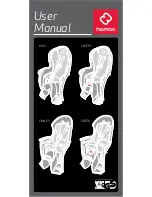
19
A. Battery charging jack
B. Power supply jack
C. Battery charging LED indicator light
CAUTION
Using a battery charger that differs from the one supplied, which is not suitable or approved, to charge the e-bike battery may
damage it or involve other potential risks.
Never leave the e-bike unsupervised while it is charging.
Do not switch on or ride the e-bike during charging.
Keep out of the reach of children during charging. Do not place anything on top of the battery charger during use; do not
allow any liquid or metal to get inside the battery charger.
The battery charger heats up during the battery charging cycle.
Do not charge the battery immediately after use. Allow the battery to cool down before charging it.
The item should not be charging for extended periods. Overcharging reduces battery life and poses additional potential
hazards.
Do not allow the battery to completely discharge to avoid damaging it and causing it to lose efficiency.
Damage caused by the battery being left uncharged for a long period is irreversible and is not covered by the limited
warranty. Once the damage has occurred, the battery cannot be recharged (the battery must not be dismantled by unqualified
personnel, as this could lead to electric shocks, short circuits or even major safety incidents).
Charge the battery at regular intervals (at least once every 3-4 weeks), even if the electrically power assisted cycle has not
been used for an extended period.
Charge the battery in a dry environment, away from flammable materials (e.g. materials that may burst into flame), preferably
at an indoor temperature of 15-25°C, but never below 0°C or above + 45°C.
Carry out regular visual inspection of the charger and charger cables. Do not use the battery charger if it is damaged.
Autonomy and battery duration
The autonomy of the battery supplied with the electrically power assisted cycle and, therefore, the relevant distance data
estimated in km, may vary significantly depending on the specific mode of use (total load transported, how hard the rider
pedals the bike, level of electric pedal assistance detected, how often the rider departs and restarts), the mechanical and
electrical conditions of the product (tyre pressure and wear, battery efficiency level) and external influences (slopes and road
surface, atmospheric conditions).
The capacity and performance of the battery will decrease over time due to the electrochemical deterioration of the battery
cells.
It is impossible to predict its duration with accuracy, since it depends above all on the type of use and stress to which it is
subjected.
To promote the longevity of the battery, it is advisable to store it in a dry environment and protected from direct exposure to
sunlight and preferably at an internal temperature of 15-25°C, but never below 0°C or above + 45°C, ideally recharge at room
temperature and avoid overcharging or its complete discharge during use and recharging the battery at regular intervals even
if you do not use the pedal-assisted bicycle for an extended period (at least once every 3/4 weeks).
Cold, in general, decreases battery performance. If used during the winter, the battery should be charged and stored at room
temperature and inserted in the electrically power assisted cycle only shortly before it is used.
















































